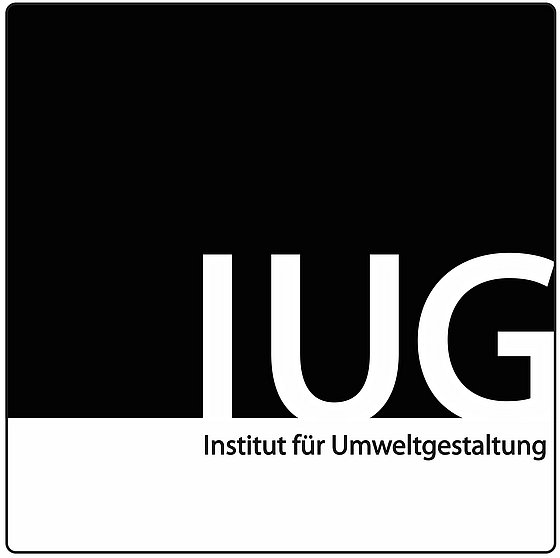Projekte und Aktivitäten
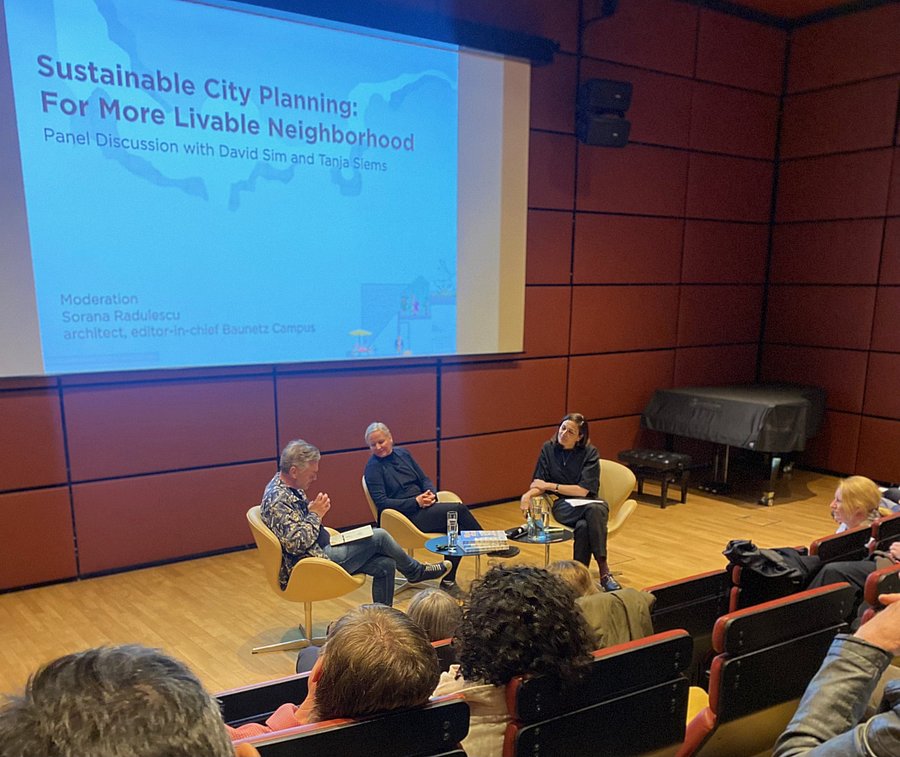
“Sustainable City Planning: For More Livable Neighborhoods”
Panel Discussion with Prof. Dr. Tanja Siems and David Sim
“Sustainable City Planning: For More Livable Neighborhoods” panel discussion at the Nordic embassies in Berlin with Tanja Siems and David Sim
The reality of urban life can be rather banal. We all have to wait for the bus on cold winter days, take out the garbage cans, drive long distances by car or commute. David Sim believes that low-cost / cost-effective measures and a focus on human scale can significantly improve life in the city. Following Bruno Latour’s actor-network theory, urban planner and professor Tanja Siems stands for an intensive exchange between teaching, practice and urban society. With her interdisciplinary work, she shows which methods and working methods can be used for participatory urban planning.
Prof. Dr. Siems und ihr Team vom Lehrstuhl Städtebau BUW forscht ab Oktober 2025 mit Studierenden am neuen „Cluster: Zukunftsquartiere“, dazu werden mögliche Handlungsfelder eines kommunalen Strategieplanes evaluiert, um ein zukunftsfähiges, nachhaltiges Quartier zu generieren. Weitere Forschungsaktivitäten sind das Aufzeigen der Transformationspotenziale sowie Veränderungsdynamiken im Rahmen von einer ausgeglichenen Quartiersentwicklung, ganzheitliche, holistische Integration der Funktionen Wohnen, Arbeiten und Produktion sowie Mobilität. Urbane Produktion, ist dies im städtischen Quartier möglich? (Dazu Promotionsthema Alexandra Radounikli morphologische Typologie der produzierenden Stadt *)
Verkehrliche Infrastruktur: Mobilität Vernetzung, ausgeglichener Modal Split etc. (15-Minuten-Stadt, Stadt der kurzen Wege, Nutzungsmischung)
Soziale Infrastruktur: Entwicklung von Kultur- und Bildungslandschaften (Funktionsmischung im Quartier)
Technische Infrastruktur: Wassersensible Stadtentwicklung sowie urbane nachhaltige Energieerzeugung (Stadt und Energie), Entsiegelung der Siedlungsbereiche (Schwammstadt), Urbaner Landschafsraum (Grünzüge und Quartierparks - Ausgleich Stadtklima)
Vernetzung der Mitte mit dem Umland (mit Beachtung einer Dezentralen-Konzentration), Sowie: Partizipative Strategien und deren Einfluss auf die einzelnen Handlungsfelder. Vermitteln und moderieren zwischen allen Beteiligten als konstanter Prozess für eine nachhaltige räumliche Erneuerung.
*A.Radounikli: Die morphologische Typologie der produzierenden Stadt: Die Bedeutung industrieller Produktionsflächen im innerstädtischen Kontext und ihr Potenzial für eine nachhaltige Stadtentwicklung im Sinne der produktiven Stadt.Eine Untersuchung morphologischer Kriterien zur Entwicklung einer Typologie und Reintegration urbaner Produktionsformen.

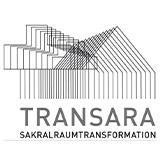
TRANSARA Sakralraumtransformation
Projektleitung Teil 4: Prof. Dipl-Ing. Ulrich Königs
Link zum Projekt

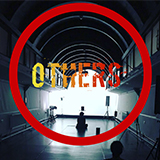
BAUHAUS 100 OTHERS
Anschlussprojekt Bauhaus Lab
Projektleitung: Prof. Dr. Tanja Siems, Dipl.-Ing. Theo Lorenz (M.Arch AA)_Director AAIS
Internationale Kooperationspartner: Architectural Association AAIS London, Gesamtatelier Athen, Trinity Laban Conservatoire of Music and Dance, Condé Nast College of Fashion and Design London
OTHERS explores what frameworks and conditions today's innovative creatives can attempt to unfold. What is unique at a time where superficial otherness seems to have become the norm, where fame is sought over content, virtual likes over substance? The answer cannot be merely loudness, outrage or flamboyance online; in doing so we become increasingly transparent, submitting more and more to the will of data. In the current discussion about the rising automation and autonomation of the working world, the creative and cultural sector is increasingly regarded as an area of activity that cannot be replaced by artificial intelligence in a holistic way. The team will examine the consequences of this new relationship between technological development and art. How lasting creativity can thrive within the development of data mining, artificial intelligent and self-learning systems of the fourth industrial renewal. How can these be used to free the creative process rather than utilising it? The research is based on the hypothesis that, unlike previous developments, art and creativity are not limited to the application of industrial and digital development, but are instead freed from restrictive, technocratic and bureaucratic conditions when creatively used as a framework.

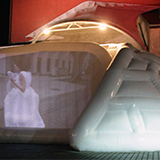
BAUHAUS LAB
an international network of interdisciplinary laboratories
Förderung durch: EU Culture Programme (Education and Culture DG) und die Kulturstiftung des Bundes
Teilprojektleitung U.K: Prof.Dr. Tanja Siems, Dipl.-Ing. Theo Lorenz (M.Arch AA)_Director AAIS
Internationale Kooperationspartner: Architectural Association AAIS London, C3 Center for Culture and Communication Budapest, EMAHO Marseille mit der Stadt Weimar und dem Theaterhaus Jena
To commemorate the 90th anniversary of the Bauhaus establishment, on the initiative of the City of Weimar German, British, Hungarian and French partners brought into existence the bauhaus lab 2009 project. bauhaus lab is an international network of interdisciplinary laboratories on new artistic strategies and modes of interdisciplinary co-operations. In full appreciation of the ideas behind the historical Bauhaus movement and their lasting impact on today’s affairs, the project wants to further explore the present conditions for an innovative artistic practice across disciplines and national borders. On the course of nearly one and a half year running period of the project the partners are going to establish laboratories where researches, workshops, seminars, symposiums, theatrical performances are prepared and afterwards the outcome is presented to the large audience. In the five international labs established on five different locations the activity is running parallel and in a strong cooperation joining several times on several surfaces. Over and above that another important aspect of the development of the network is a preparation of the 100th anniversary of the foundation of the Bauhaus movement.
Link to Project overview: http://bauhauslab.c3.hu/partners/

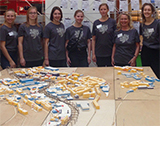
Flächensuffizienz Lab
Reallabor_Arrenberg und LAB_Tiflis im Rahmen der Architektur Biennale
Förderung durch: DBU Deutsche Bundesstiftung Umwelt
Projektleitung: Prof.Dr. Tanja Siems, Julia Siedle
Many spaces within existing buildings are only being used temporarily, if at all. There are countless empty children‘s bedrooms in housing complexes; theatres don‘t open until the evening; offices are not used two-thirds of the time on average. While the German population has stopped growing decades ago, the demand for spaces to live, work and play has continuously gone up. In other words: the consumption of space per capita is rising. For example, today we live at 46.5 square meters on the German average, which means an increase of 20% since the year 2000. The answer so far was to build more, consuming more land and resources for construction. A growing percentage of sealed land, more frequent flooding, high consumption of energy and other resources for the construction and operation of new buildings, the loss of habitats of plants and animals, and longer commutes are only some of the consequences. Construction therefore compromises in many ways the objectives of environmental sustainability we have agreed upon as a society, such as the Paris Climate Agreement of 2015. And the vitality of urban spaces are jeopardized with massive de-densification of buildings, neighbourhoods and cities.
We believe that there is no need to build more. Instead, we can find new ways of using our existing buildings more productively. By identifying potential spaces and finding strategies to match them with local demands, we can counteract the need for new buildings. This is what our „space sufficiency lab“ in the Wuppertal neighbourhood of Arrenberg, Germany, aims to achieve. For example, students can move into empty bedrooms; cinemas can be used as lecture halls during the day; office spaces can be shared among several businesses and turn into gyms or gathering spaces after workers have gone home.
Building less will benefit not only the environment, but also property owners, space consumers, and the community: it‘s cheaper, it preserves open and public spaces, and it strengthens social ties.
Viele Räume im Gebäudebestand werden nicht oder nur zeitweise genutzt. In Wohnhäusern stehen Kinderzimmer leer, Theater öffnen erst abends ihre Türen, Büroarbeitsplätze bleiben nach Feierabend oder wegen Meetings, Urlaub und Krankheit über ganze Tage oder Wochen ungenutzt.Noch hinzu kommt der Leerstand von ganzen Nutzungseinheiten. Das Flächensuffizienz-Lab erforscht Wege, diese Raumpotentiale zu aktivieren und Bestandsgebäude effektiver zu nutzen. Dadurch wird der Bedarf an Neubau mit all seinen negativen ökologischen und sozialen Folgen reduziert. Die fortschreitende Flächenversiegelung, der trotz Effizienzmaßnahmen konstant hohe Energieverbrauch für Herstellung und Betrieb von Gebäuden, der Verlust von Habitats für Flora und Fauna sowie von landwirtschaftlichen Flächen, immer weitere Wege und steigende Kosten für Infrastruktur können durch Nutzungsverdichtung eingedämmt werden. Ansatzpunkte dafür sind die Mehrfachnutzung von Räumen, die Neunutzung von (teilweise) leerstehenden Einheiten und die Reduktion von Raumbedarfen.
Eine solche Vermeidung von Neubauflächen durch Nutzungsverdichtung im Gebäudebestand definieren wir als Flächensuffizienz. Das Flächensuffizienz-Lab als inter- und transdisziplinäres Forschungsprojekt des Lehrstuhls Städtebau als wissenschaftlicher und dem Aufbruch im Arrenberg e.V. als Praxispartner entwickelt gemeinsam mit Studierenden und verschiedenen Akteuren aus dem Quartier praktisches Wissen und wirkungsvolle Planungsinstrumente zur Nutzungsverdichtung im Gebäudebestand. Im Reallabor Wuppertal Arrenberg sowie in Tifilis während der Summer School werden Strategien zur Nutzung von lokalen räumlichen Potentialen erarbeitet, umgesetzt und wissenschaftlich evaluiert.
Link zum Tag der Forschung sowie der Tbilisi Architecture Biennial
http://biennial.ge/uni-wuppertal/

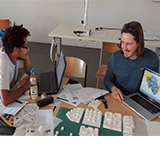
Solarenergienutzung im städtebaulichen Kontext
inklusive IEA Mitarbeit SHC Task 51 Subtask D
Projektleitung: Prof.Dr. Tanja Siems, Dr. Katharina Simon
Kooperationspartner Deutschland: Prof. Dr. habil. Ursula Eicker, HFT; Dr. Gustav Hillmann, IBUS; Prof. Dr. Karsten Voss, BUW
Internationale Praxispartner und Institutionen in Australien, Dänemark, Deutschland, Italien, Kanada, Lichtenstein, Norwegen, Österreich, Schweden und der Schweiz.
In dem interdisziplinären und international aufgesetzten Forschungsvorhaben werden systematisch für die Entwicklung der Solarenergie im urbanen Kontext die Barrieren untersucht, verschiedene Planungstools dokumentiert sowie weiterentwickelt und exemplarisch anhand von internationalen Case Studies und Case Stories angewandt.
Ziel dabei ist es Planungsrichtlinien zu entwickeln, welche Architekten und Planern verlässliche Anweisungen für eine effiziente Nutzung solarer Energien im städtischen Kontext an die Hand geben. Neben der Methodenerarbeitung ist ein wesentlicher Bestandteil die Entwicklung eines Planungswerkzeuges als Teil des EnOB Lernnetzes, die Integration in die Lehre sowie die Kommunikation der Forschungsergebnisse. Eine konsequente Evaluierung bekannter Werkzeuge ist zu leisten. Unter Werkzeugen verstehen wir einerseits die analytische Auseinandersetzung mit städtebaulich- energetischen Parametern (historische Kenntnisse, Rechtsgrundlagen, Forschungsstand auf Siedlungs- und Quartiersebene), andererseits die Auseinandersetzung mit existierenden Softwaretools. Parallel dazu bietet die Recherche und Dokumentation von Fallbeispielen eine ideale Ressource für die Lehre, da sie zur Evaluierung hinsichtlich der genutzten Werkzeuge und Prozesse dienen und eine realitätsnahe Plattform für den Test bestehender und vor allem neuer Werkzeuge bieten.
Die Entwicklung und Implementierung geeigneter Softwaremodule in das „EnOB Lernnetz“ und die Anwendung in der Lehre bieten den Studierenden die Möglichkeit Simulationen auf den städtebaulichen Maßstab zu erweitern. Die Durchführung eines Symposiums, einer Sommerakademie sowie mehrerer Workshops öffnet sowohl Studierenden als auch der Praxis den Blick für die Thematik. Die Ergebnisse werden in Form von Publikationen der breiten Öffentlichkeit zur Verfügung gestellt.
Link zur Publikation:
Summer Schools on Solar Energy in Urban Planning - Teaching Methodologies and Results
http://task51.iea-shc.org/Data/Sites/1/publications/2017-06-Task51-Report-D2-English.pdf
State-of-the-Art of Education on Solar Energy in Urban Planning
Part 1: Approaches and Methods in Education
http://task51.iea-shc.org/Data/Sites/1/publications/170601_Task51_ReportD1_Part1_v2.pdf
Part 2: Solar Irradiation Potential Tools in Education
http://task51.iea-shc.org/Data/Sites/1/publications/180222_Task51_Report_DD1_Part21.pdf

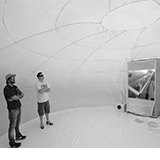
Die Stadt als hydrologisches System im Wandel
Schritte zu einem anpassungsfähigen Management des urbanen Wasserhaushalts (SaMuWa)
Förderung durch:
BMBF Bundesministerium für Bildung und Forschung
Projektleitung: Prof.Dr. Tanja Siems, Johannes Geyer
Das Forschungsprojekt SAMUWA ist ein Verbundforschungsvorhaben innerhalb der INIS Fördermaßnahme "Intelligente und multifunktionelle Infrastruktursysteme für eine zukunftsfähige Wasserversorgung und Abwasserentsorgung". Ziel des interdisziplinären Forschungsprojektes ist es, Kommunen bei der Umstellung von einer statisch ausgerichteten Entwässerungsplanung zu einer flexiblen und anpassungsfähigen Bewirtschaftung des stadthydrologischen Gesamtsystems zu unterstützen. Es sollen einerseits planerische und betriebliche Möglichkeiten untersucht werden, um das Potenzial des vorhandenen Bestands (städtische Wasserinfrastruktur) unter den Bedingungen des Wandels (Klimawandel, demografischer Wandel) und der dadurch entstehenden Unsicherheiten bestmöglich auszunutzen. Darüber hinaus werden Planungsinstrumente entwickelt, die über den Bereich der Siedlungsentwässerung hinausreichen, um die Handlungsoptionen, auch hinsichtlich von Governancestrukturen, zu erweitern, mehr Flexibilität zu schaffen und Folgen ganzheitlich zu bewerten. Es werden Stadtentwicklungs- und Freiraumplanung sowie Wechselwirkungen mit dem natürlichen Wasserhaushalt einbezogen. Der wesentliche innovative Beitrag des Vorhabens liegt in der eng aufeinander abgestimmten Entwicklung von planerischen und digitalen Instrumenten und Methoden für eine Modellierung, Visualisierung (Daten- und Informationsmanagement) von organisatorischen, gestalterischen Prozessen und Strukturen.
Partner im Verbundprojekt sind die Universität Stuttgart: Institut für Siedlungswasserbau, Wassergüte- und Abfallwirtschaft (ISWA), Institut für Wasser- und Umweltsystemmodellierung (IWS), Institut für Landschaftsplanung und Ökologie (ILPOE), FH Münster: Institut für Wasser Ressourcen Umwelt (IWARU), Institut für Automation und Kommunikation e.V. (ifak) Magdeburg, Dr. Pecher AG Erkrath , Infra-Consult Stuttgart , aqua plan Krefeld, Wuppertaler Stadtwerke Energie & Wasser AG (WSW) , Stadt Reutlingen, Stadt Wuppertal, Stadt Münster, Wupperverband (WV) und Emschergenossenschaft (EG).
Den Endbericht finden Sie hier...

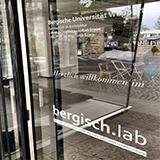
bergisch.project
urban potentials of a region somewhere in Europe
Förderung durch:
Jackstädt Stiftung sowie regionale Sponsoren
Projektleitung: Prof.Dr. Tanja Siems, Ragnhild Klußmann, Bärbel Offergeld
Which qualities characterise the regional co-operation of the three cities in the Bergisch region? How can the region deal with its problems? How can it create a network and cultivate its own profile despite its constraints of options? In today’s discussions on urban and regional transformation processes, a region like the Bergisch city-triangle does not draw any trans-regional attention, given it has all the same problems and functions that can be found elsewhere and, at a first glance, no particular singularities that would warrant close attention. The spatial fragmentation doesn’t just express itself in the cities along the Wupper and development processes since the early industrialisation, but, since the beginning of settlements, the geographical composition of valleys and heights, woods and watercourses determines a certain scale that defies every big gesture. Nevertheless or maybe because of this, interesting developments are possible, which have not yet been fully evaluated or compared to similar regions. With respect to urban planning, there are numerous starting points on how this region will be able to develop and what potentials are available in order to assert its position amongst cities and regions.
To achieve this it has to break new ground and develop new strategies. This is where the bergisch.project comes into play: it wants to ask questions, sound out potentials and develop scenarios for the region, not only with regards to urban development, but also, in co-operation with various disciplines, to introduce new topics, ideas and suggestions into the discussion. Most of all it wants to examine the vibrant and lively region. The focus of the project are the three summer school in Wuppertal Mirker Bahnhof, Solingen Mirker Bad und Remscheid City, which brings together students and experts of different universities and disciplines in a workshop to deal with interdisciplinary questions. This summer schools are accompanied by scientific research, additional projects and tasks at the university as well as by other formats like exhibitions, publications and events which deliberately seek contact to the region and its people and with the aim to establish and linking the project into the region.
Link to Publikations:

zuletzt bearbeitet am: 13.02.2025

